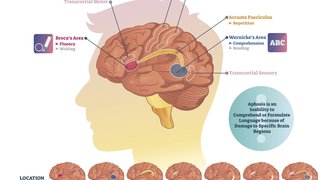
Every 40 seconds, someone in the U.S. has a stroke – it’s a leading cause of hospitalizations and long-term disability in this country. More than 300,000 of these 795,000 patients each year have moderate to severe lasting impairments.
While we’ve made strides in recent years in stroke rehabilitation, one fact has become apparent: For optimal results, rehab must begin in the hours immediately following a stroke.
As one of two Advanced Joint Commission Comprehensive Stroke Centers in North Texas, my colleagues and I at the UT Southwestern Peter O'Donnell Jr. Brain Institute work to bridge the worlds of acute stroke care and stroke rehabilitation.
While a large body of research focuses on the role rehabilitation plays after acute care, recent studies indicate that stroke rehab should start during initial hospitalization. We were awarded a research grant through the Texas Health Resources Clinical Scholars Program to analyze existing acute stroke and rehabilitation data sets. The goal of this work is to create models that predict the optimal strategy for rehabilitation.
The UT Southwestern Stroke Rehabilitation team has implemented an innovative program that begins early evaluation of patients in the neuro intensive care unit and follows them through discharge. Our goals are to identify patients who will benefit from early intensive stroke rehab, and to streamline referrals, decrease the length of hospital stays, and improve functional outcomes.
Our team incorporates multidisciplinary expertise from on-campus specialists in physical medicine and rehabilitation (PM&R), vascular neurology, neurocritical care, nursing, therapy, and case management. Patients in our program begin, from Day One, to:
- Regain cognitive and motor skills they may have lost
- Increase independence for the best possible quality of life
- Reduce the risk of hospital readmission and medical intervention due to immobility, reduced function, and stroke-related depression.
How we implement data-driven stroke rehab
At the heart of our program is a unique stroke data registry. We obtain data from medical records for patients hospitalized for stroke care at UT Southwestern and Texas Health Resources Hospitals to capture patient characteristics, including:
- Age, gender, race, and ethnicity
- Type of stroke
- Type(s) of treatment administered
- Length of hospital stay
- Type(s) of rehabilitation therapy used
- Rehabilitation therapy minutes
- Rehabilitation co-treats, such as whether physical therapy and occupational therapy collaborated
Our database will also document long-term outcomes, such as whether the patient went home, to an inpatient rehabilitation facility, to a skilled nursing facility, or to a long-term acute care facility. Our ultimate goal is to create probability models that can predict care escalation within the first 24 hours of a stroke or of post-acute inpatient rehabilitation facility care in the first three days after an acute stroke.
Initiating stroke rehabilitation on Day One
A study published in May 2019 in Physical Therapy showed that prior hospitalization, an ICU stay, or the use of a feeding tube were factors associated with a decreased likelihood of receiving rehabilitation therapy. Too often, intensive rehab does not occur in comprehensive stroke centers. Instead, patients are referred for post-acute rehabilitation services and support.
We are shaking up that model at UT Southwestern. Our stroke team identifies patients the moment they are ready to begin rehab – ideally starting care coordination on Day One, even for patients in the neuro ICU.
Every morning, PM&R physicians and multidisciplinary experts review every case to evaluate a patients’ readiness for rehabilitation.
Key criteria include:
- Is the patient ready sit up out of bed three times a day?
- Can the patient engage in passive or active range of motion exercises?
- Could the patient benefit from a neurostimulant for fatigue?
- Might the patient benefit from the use communication boards?
- Can the patient tolerate a swallow study?
- What is the earliest the patient can be evaluated with a depression screen?
We also inquire whether the patient has a caregiver who can provide additional support and rehabilitation at home. For optimal outcomes and continuity of rehabilitation, it's crucial to identify this support early and not on the day of discharge.
Creating and implementing this comprehensive stroke rehabilitation care paradigm is critical to decrease the disability burden of stroke on patients, families, and society as a whole. If you have a patient with a history of stroke or who is at high-risk for having one, we welcome your referral. Our team of experts can provide clinical support to help reduce their risks and familiarize them with our program in the event they do have a stroke.
It is our goal that the UT Southwestern Stroke Rehabilitation program – and our ongoing research in disability prevention – will culminate in a healthier population in North Texas and beyond.
To learn more about our stroke rehab program, visit our website.










